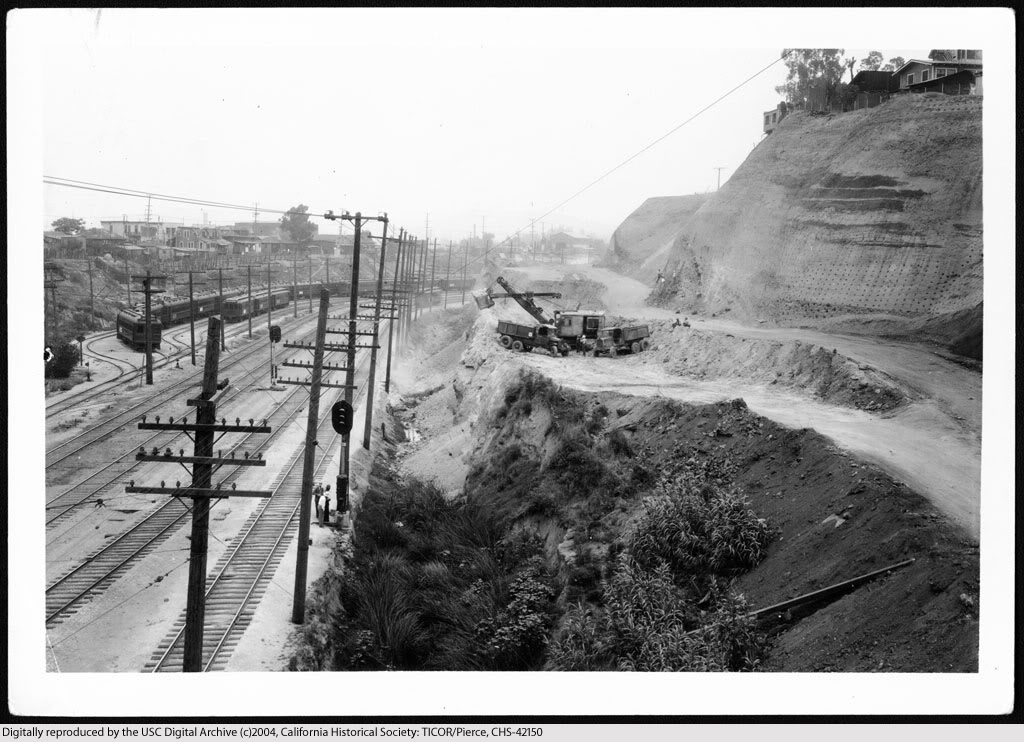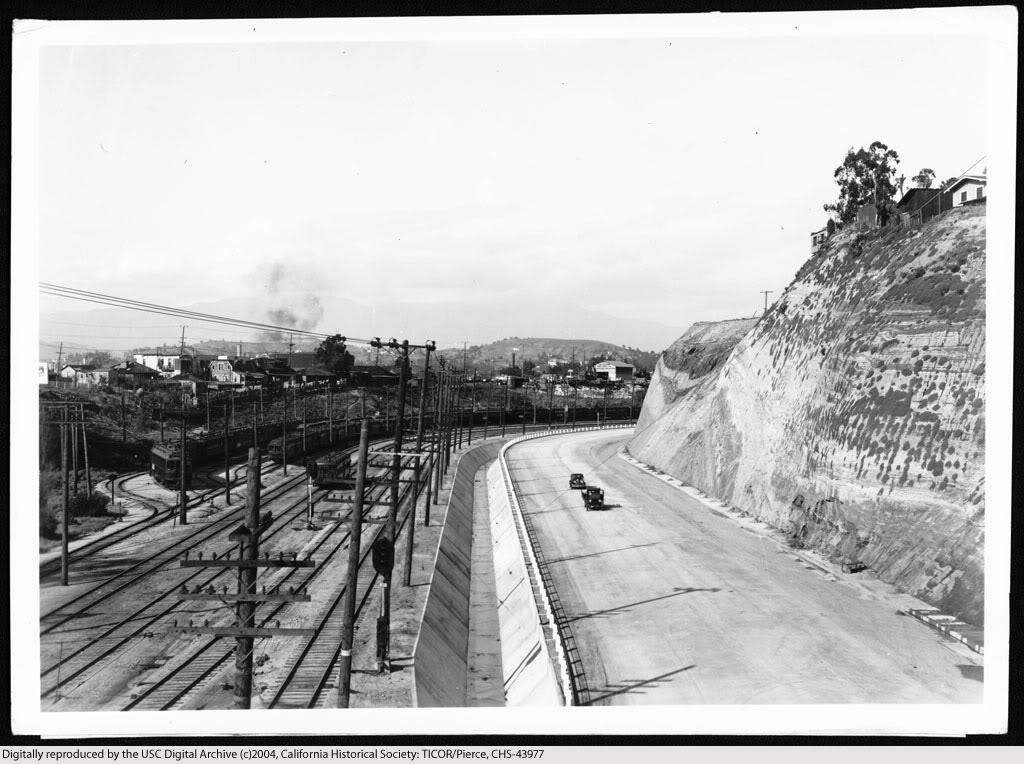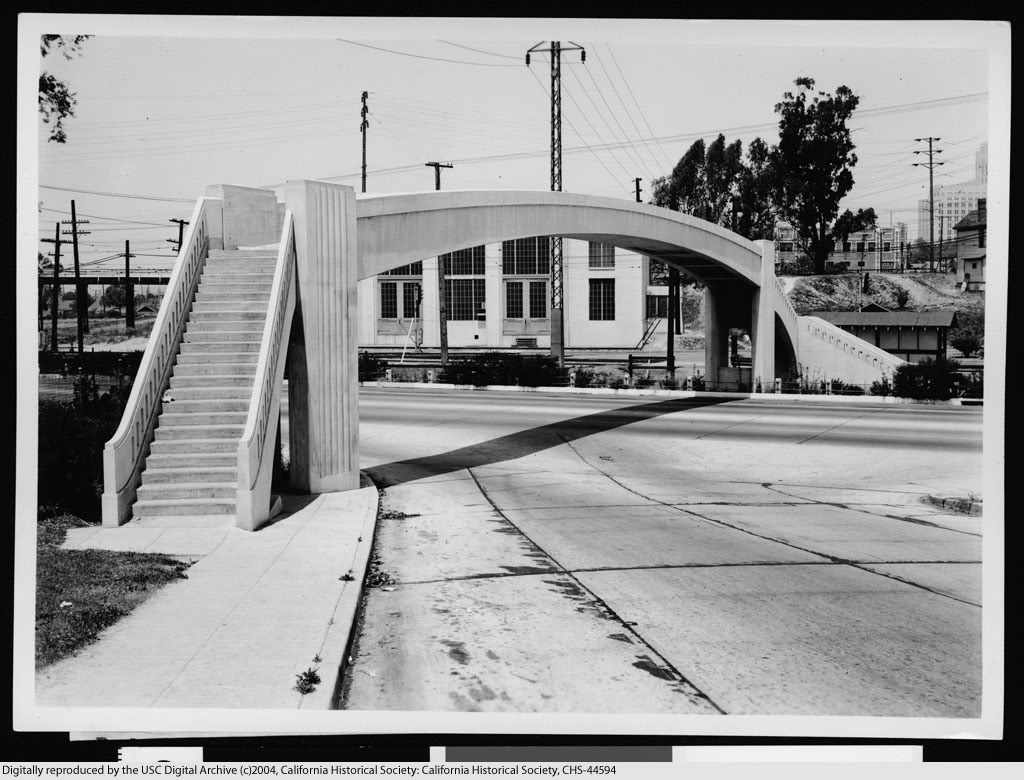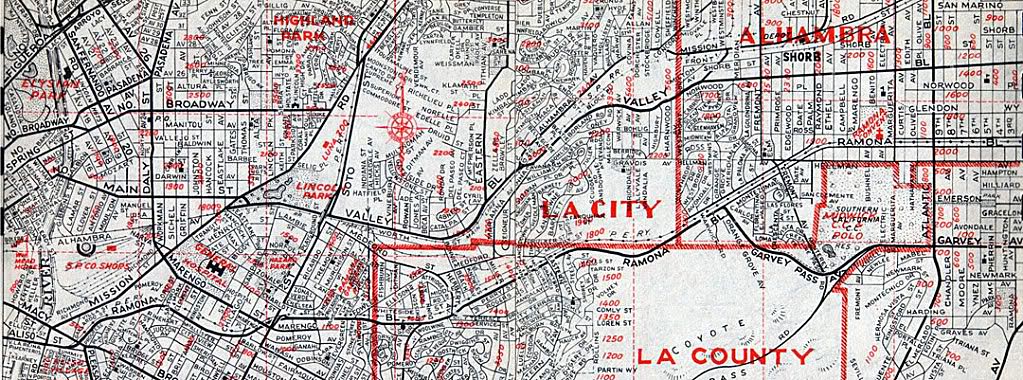
Renie Atlas, "Victory Edition," May, 1943.
View east on Aliso Street at its intersection with Mission Road (foreground) and Summit Avenue (far right) before its widening for the construction of Ramona Boulevard, November 27, 1933.
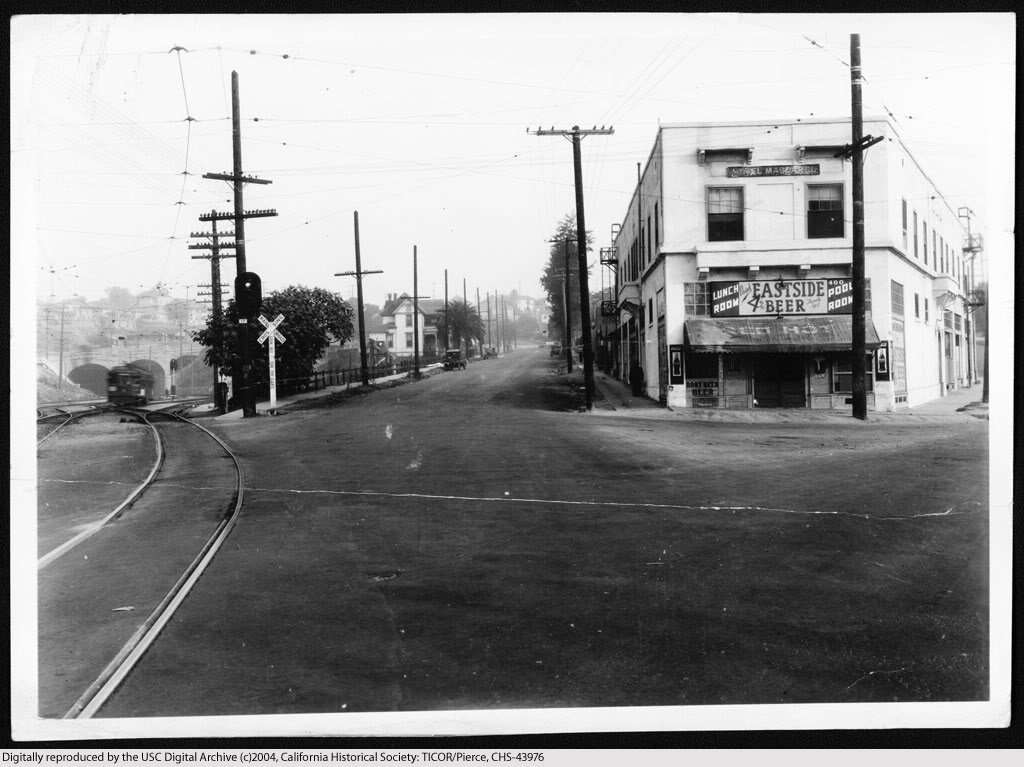
USC Digital Library-California Historical Society.
The new east road is open to traffic, April 15, 1935.
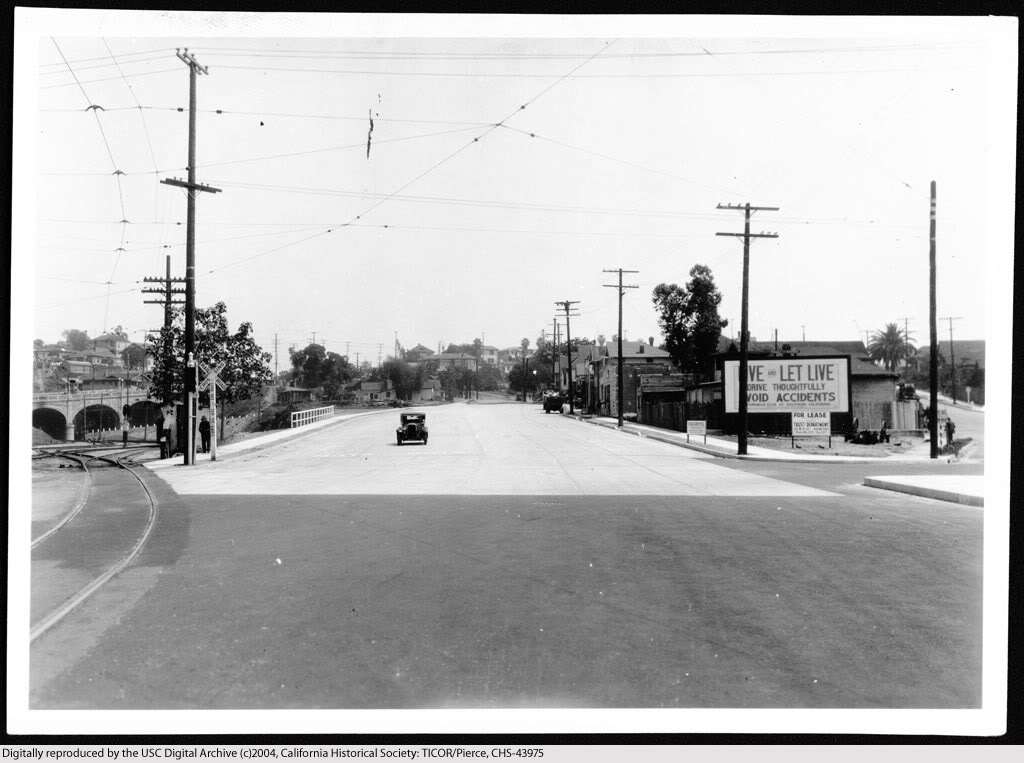
USC Digital Library-California Historical Society.
U.S. Highway 101 at Mission Road looking east, 2009.

Link to Google Maps Street View.
Continue reading...

